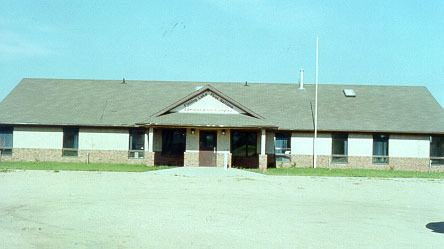Primary outflows none Province Saskatchewan | Basin countries Canada | |
 | ||
Location Foam Lake No. 276, Saskatchewan | ||
Fishing Lake is a lake in the Canadian province of Saskatchewan. The lake is located between highway 5 and highway 16, 22 km north of the town of Foam Lake, Saskatchewan, and 24 km east of the town of Wadena, Saskatchewan. The lake does not have an effective outlet channel, and so is prone to flooding. Record floods in 2007 resulted in a plan by the Government of Saskatchewan to lower the level of the lake by digging a drainage channel. The Fishing Lake First Nation opposed this plan, and instead flood control berms were constructed.
Contents
- Map of Fishing Lake Foam Lake No 276 SK Canada
- Fishing Lake ParkEdit
- Fishing Lake First NationEdit
- References
Map of Fishing Lake, Foam Lake No. 276, SK, Canada
Fishing Lake ParkEdit
Fishing Lake Park is a regional park located along the shores of Fishing Lake. The park was established in 1967, and operates six locations: Chorney Beach, Leslie Beach, Knights of Columbus, Saskin Beach, Pavilion Beach and the Foam Lake Golf and Country Club.
Fishing Lake First NationEdit
The Fishing Lake First Nation are an independent first nation of the Saulteaux branch of the Ojibwe nation.. The band can trace their origins to central Canada, and were pushed westward to avoid encroachment by European settlers. The First Nation was originally part of the Yellow-quill Saulteaux Band, a Treaty Band named after a Treaty 4 signatory Chief Ošāwaškokwanēpi, whose name means "Green/Blue-quill." However, due to "š" merging with "s" in Nakawēmowin (Saulteaux language), this led to a mistranslation of his name as "Yellow-quill"—"yellow" being osāw-, while "green/blue" being ošāwaško- (or osāwasko- in Saulteaux). The band was given three reserves, at Fishing and Nut Lakes (surveyed in September, 1881) and Kinistino, Saskatchewan (surveyed in 1900). The Fishing Lake Indian Reserve 89 was approximately 22,850 acres (92.5 km2). Soon after the death of Chief Ošāwaškokwanēpi, the Band divided into three groups, the Fishing Lake First Nation, the Yellow Quill First Nation, and the Kinistin Saulteaux Nation
In 1905 the Canadian Northern Railway Company requested that the northern end of the Fishing Lake Reserve be opened for settlement. The Yellow-quill Saulteaux Band initially refused to surrender the land. In response, the Department of Indian Affairs had the Yellow-quill Saulteaux Band sign an agreement recognizing the three separate reserves as distinct bands. In 1907 the Department was able to secure the surrender of 13,170 acres (53.3 km2) from Fishing Lake Indian Reserve 89, dealing directly with the now distinct Fishing Lake First Nation.
Negotiations for the return of the surrendered land began in April 1989 when the band submitted a claim to the Minister of Indian Affairs. During the subsequent inquiry by the Indian Claims Commission it was discovered that as many as three of the individuals who signed the surrender document in 1907 were less than 21 years of age. It was also discovered that the affidavit certifying the surrender was not properly sworn according to the statutory standards in place at the time.
In 2001, a Settlement Agreement was ratified allowing the band to add 13,190 acres (53.4 km2) to the reserve. In addition, band members received $2,000 each, and elders 55 years of age or older received $4,000 apiece. The agreement was worth $35,000,000, and was Saskatchewan's largest land claim.
There are presently 1,475 people registered with the Fishing Lake First Nation, of which 405 live on reserve.
